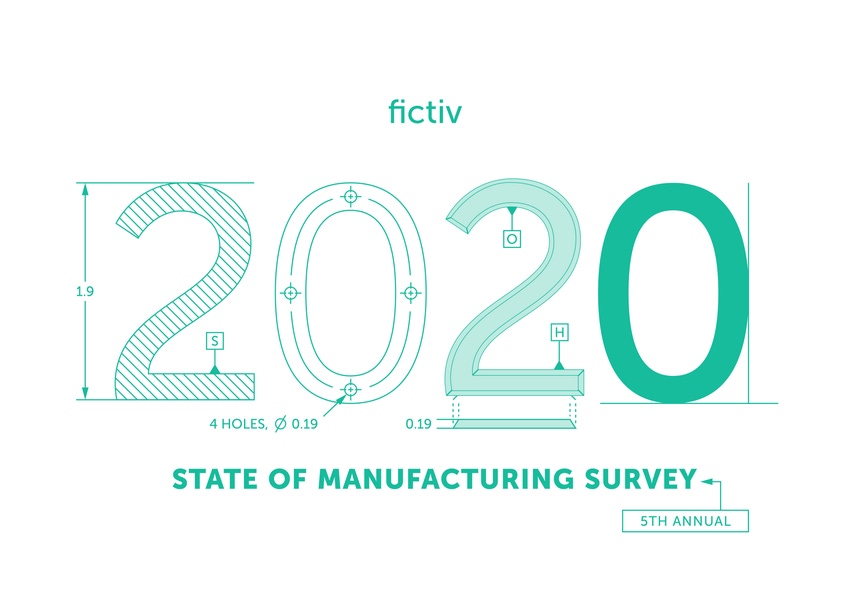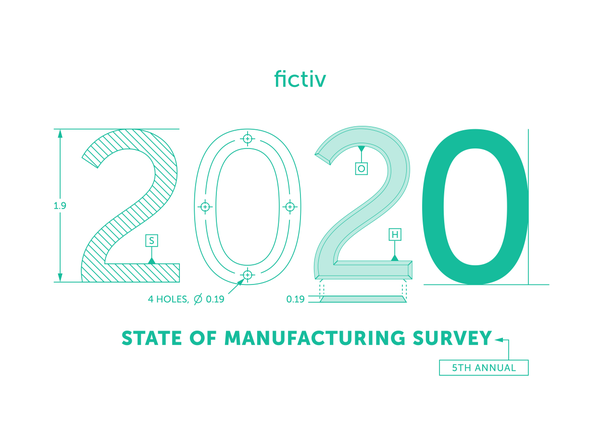The economic and market effects of COVID-19 are prompting manufacturers toward further supply chain agility and digital transformation in self-defense.
August 3, 2020

If 2019 was a tough year for manufacturing, 2020 is even worse. Turns out US manufacturers are struggling through some formidable challenges during this pandemic. Manufacturing ecosystem company, Fictiv, released its annual State of Manufacturing Report and the timing was just right for showing an industry back on its heels. Manufacturing leaders are grappling with fallout from the pandemic while eyeing new opportunities created by the disruption.
Key findings include:
89% of US manufacturers report a direct business impact from COVID-19, including lower sales, increased costs of materials and production, and canceled or delayed product launches
Only 17% gave top marks to their supply chain’s performance over the last year.
A majority are revisiting their reliance on China and looking to the U.S. as the next key manufacturing center
97% said COVID-19 has created new opportunities, with 87% making digital transformation a high priority
Supply chain resilience is important to 99% of respondents, with 96% working to increase supply chain agility
Apparently, many manufacturers are taking this unusual moment in the market to improve their agility and shore up their supply chains.

The report’s findings were culled from hundreds of senior decision makers in healthcare, robotics, auto, aerospace, and other hardware manufacturers. The findings include detailed stats on business impacts, thoughts on digital innovation and budgets, and how to view China’s changing role.
“The world has changed dramatically since last year. 2019’s trade war and 2020’s global pandemic have manifested as the same core business challenges: lower sales, inflated costs, and cancelled or delayed launches,” Fictiv CEO Dave Evans told Design News. “The pandemic has suppressed demand, workforce, and supply for everyone all at once, triggering negative impacts on a much more massive scale than businesses reported in last year’s survey.”
Manufacturers Are Slammed by the Pandemic
Further details of the report reveal a manufacturing industry that has taken a significant blow but is willing and ready to make the changes required to emerge from the dark times stronger and more agile.
COVID-19 Has Negatively Harmed 89% of Businesses and Industries
Sales are down 44%, cost of materials and components have increased 41%, and production times have lengthened 41%
36% have had to lay off good employees
24% have been unable to fill customer orders
Digital and AI Advances are Important, But Funding Still Lags
87% have a high priority digital transformation initiative
Reducing cost (46%), increasing supply chain visibility (42%), and driving efficiencies (40%) are some of the top goals for these digital efforts
Yet, only 14% believe their digital transformation initiative is well funded, and 81% face difficulty finding necessary expertise
Supply Chains Will Look Different, But China Remains an Option
83% agree COVID-19 has been an extreme test of their supply chain
84% say they will be more cautious about offshoring now than in the past
While 73% will minimize reliance on China, 74% will continue to source some parts from the region
We may see a different manufacturing world in the US once the dust finally settles on COVID-19. Those companies that take advantage of changing circumstances to shore up their operations and markets, may find themselves with stronger supply chains that are less subject to disruption. They may also strengthen their domestic production and domestic supply sources.
“The primary shift from 2019 to 2020 is that this year, 96% of respondents see supply chain resilience as a top priority for future business growth and actively working to increase agility in their supply chain,” said Evans. “The prevailing thought is that manufacturing companies who survive COVID-19 will be the ones that saw the innovation opportunities – not just the problems. Digital transformation, with digital manufacturing platforms at the forefront, will be key as the manufacturing industry finally reckons with its true tech moment.”
Rob Spiegel has covered automation and control for 19 years, 17 of them for Design News. Other topics he has covered include supply chain technology, alternative energy, and cyber security. For 10 years, he was owner and publisher of the food magazine Chile Pepper.
About the Author(s)
You May Also Like





